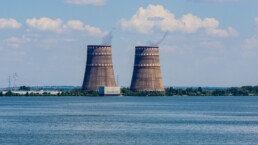The nuclear “war” in Ukraine may not be the one we expect.
by Joshua Frank, Tom Dispatch
In 1946, Albert Einstein shot off a telegram to several hundred American leaders and politicians warning that the “unleashed power of the atom has changed everything save our modes of thinking and we thus drift toward unparalleled catastrophe.” Einstein’s forecast remains prescient. Nuclear calamity still knocks.
Even prior to Vladimir Putin’s bloody invasion of Ukraine, the threat of a nuclear confrontation between NATO and Russia was intensifying. After all, in August 2019, President Donald Trump formally withdrew the U.S. from the Intermediate-Range Nuclear Forces Treaty, long heralded as a pillar of arms control between the two superpowers.

“Russia is solely responsible for the treaty’s demise,” declared Secretary of State Mike Pompeo following the announcement. “With the full support of our NATO allies, the United States has determined Russia to be in material breach of the treaty and has subsequently suspended our obligations under the treaty.” No evidence of that breach was offered, but in Trump World, no evidence was needed.
Then, on February 21st of this year, following the Biden administration’s claims that Russia was no longer abiding by its obligations under the New START treaty, the last remaining nuclear arms accord between the two nations, Putin announced that he would end his country’s participation.
Recent Posts
‘Unconstitutional. Unethical. Authoritarian.’ ICE Bars Millions Of Immigrants From Bond Hearings
July 18, 2025
Take Action Now One watchdog said the new policy “seems like a blatant attempt to stop them from exercising their right to due process.”……
Americans Are Not Nearly Alarmed Enough About Climate Change
July 18, 2025
Take Action Now Americans still don’t comprehend how imminent, dangerous, and far-reaching the threat is—and journalists are partly to blame.By…
The IRS Is Building A Vast System To Share Millions Of Taxpayers’ Data With ICE
July 17, 2025
Take Action Now ProPublica has obtained the blueprint for the Trump administration’s unprecedented plan to turn over IRS records to Homeland Security…
Israel’s Sudden Assault On Syria Is Unchecked Aggression
July 17, 2025
Take Action Now Jerusalem is bombing Damascus and threatening al-Sharaa’s rule, while Washington was hoping to help the nascent government on…




